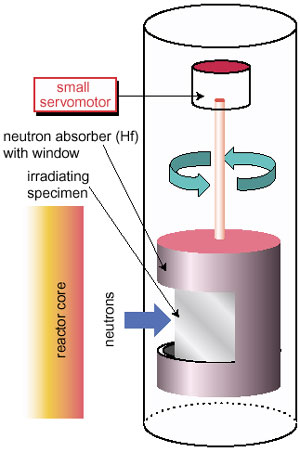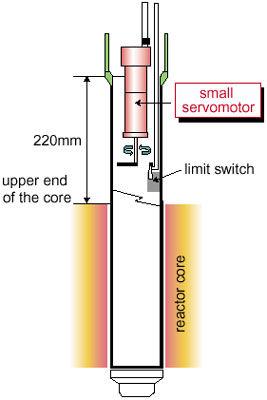Test blanket modules to be installed in the International Thermonuclear Experimental Reactor (ITER) will be exposed to neutrons and gamma-rays. ITER will be operated in a pulsed mode.
The development of a capsule to perform irradiation material experiments of the test blanket modules using the Japan Materials Testing Reactor (JMTR) is underway. To simulate the pulse-mode operation of ITER, the capsule needs to have functions of both to rotate a neutron absorber with a window for neutron beams and to place the neutron absorber in predetermined positions. But servomotor must be small enough to be stored in the capsule (Fig. 12-1). Small servomotor is 1 m away from the upper end of the core in the capsule and must endure the radiation of neutrons and gamma-rays. Furthermore the coil diameter of the small servomotor must be also small.
A conventional small servomotor with polyester-insulated copper wire is not suitable for these irradiation experiments due to the weak radiation tolerance of the wire insulation. Therefore, a new small servomotor has been developed utilizing radiation resistant materials for twenty one of the forty four elements in small servomotor, for example, polyimide-insulated copper wire for the motor coil and so on (Table 12-1).
The irradiation test of a small servomotor installed in a capsule (Fig. 12-2) was conducted in the JMTR. The results confirmed that the small servomotor will be sufficiently usable for the JMTR irradiation experiments since it withstands 30 times more irradiation than a conventional small servomotor.
In addition, new functions of rotation and vertical movement of specimen under irradiation will be expected as advantage for various tests. |



